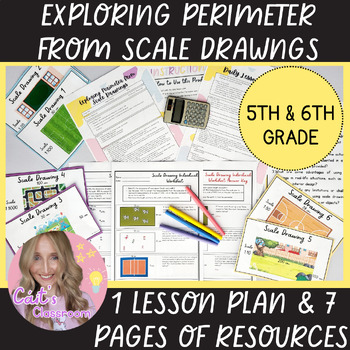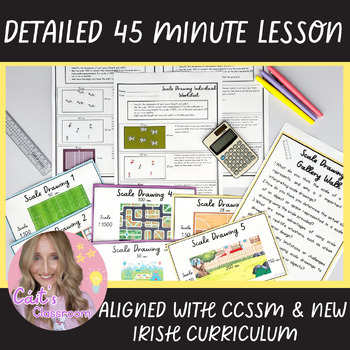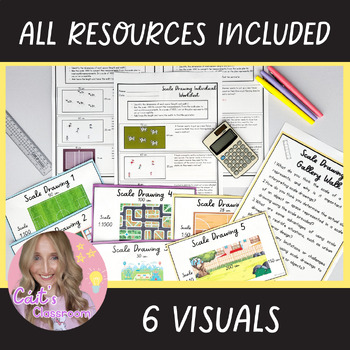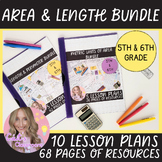Perimeter Math Lesson Plan│Scale Drawing Perimeter Worksheet│5th/6th Grade
- PDF
Also included in
- 5 lesson plans & 42 pages of activities/resources on metric units of length measurement and perimeter for fifth and sixth grade. Revolutionize your math classes with this comprehensive resource covering topics such as:Selecting, Estimating, Comparing and Measuring Metric Units of LengthMetric SyPrice $16.84Original Price $23.35Save $6.51
- 10 lesson plans & 68 pages of activities/resources on area, perimeter and length for fifth and sixth class.Revolutionize your math classes with this comprehensive resource covering topics such as:Measuring, calculating, and converting square metres to square centimetres.Calculating, converting,Price $26.40Original Price $40.53Save $14.13
Description
Struggling to find an engaging lesson for fifth/sixth grade on measuring perimeter from scale drawings? Want it to include a perimeter worksheet, step-by-step instructions and a gallery walk activity? Then this resource is for YOU!
Take the stress out of creating complete lesson plans and resources! This no-prep lesson focuses on investigating, interpreting and calculating perimeter to understand the concept of scale.
This resource is also aligned with both CCSSM and the Irish Primary Mathematics Curriculum (2023) for seamless integration into planning documents.
Say goodbye to weekends planning on your laptop and hello to an engaged classroom – grab your copy TODAY!
Benefits:
- Saves valuable prep and planning time for teachers by clearly outlining how the lesson ties to new curriculum elements and competencies.
- Offers a complete, print-and-go resource with step-by-step instructions, ideal for newly qualified teachers who want support teaching maths to the senior classes.
- Deepens student understanding of scale and the connection between scale and perimeter.
In Depth Description:
This 45-minute lesson plan includes:
- Scale drawings of various sizes.
- Gallery walk intructions and question guide.
- 1 independent practice worksheet (colour/black and white) with an answer key.
- 3 learning objectives.
- Differentiation strategies for both struggling and advanced students.
- Formative and summative assessment ideas.
- Key vocabulary and definitions.
- Explicit links to the new Irish Primary Mathematics Curriculum (2023), specifically the element of understanding and connecting and the competencies of being creative and an effective communicator.
- Explicit links with CCSSM
6th Grade
- CCSS.6.RP.A.1 Understand the concept of a ratio and use ratio language to describe a ratio relationship between two quantities.
- CCSS.6.RP.A.2 Understand the concept of a unit rate a/b associated with a ratio a:b with b ≠ 0, and use rate language in the context of a ratio relationship.
- CCSS.6.RP.A.3 Use ratio and rate reasoning to solve real-world and mathematical problems.
Mathematical Practice Standards:
- CCSS.MP1 Make sense of problems and persevere in solving them.
- CCSS.MP4 Model with mathematics.
Don't let this opportunity slip away! Elevate your teaching experience and engage your students - secure your complete lesson plan and resources TODAY!
Click here to join the Cáit's Classroom mailing list for valuable tips, tricks, and special offers designed to support newly qualified teachers in effectively teaching maths to 3rd-6th class students.
Related Products
⭐ 2D Perimeter Math Lesson Plan│Worksheet & Hands-on Activities│5th/6th Grade
⭐ Length Measurement Lesson Plan│Worksheets, Activities, Visual Aids│5th/6th Grade
⭐ Length Operations Math Lesson Plan│Worksheets & Game│Metric System│5th/6th Grade
⭐ Renaming Length Math Lesson Plan│Worksheets, Game, Guided Practice│5th/6th Grade







